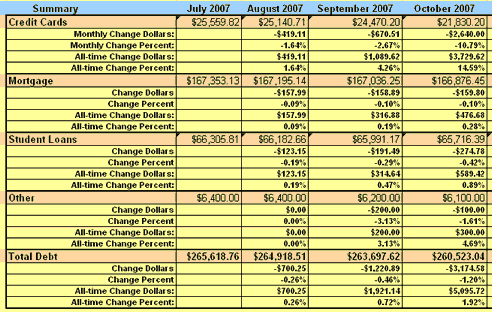No, really. It was a brilliant (lucky) investment. I made almost 400% on my money in about a week. I find this story so fascinating because so many people associate Enron with tragic loss. Well, that was the case for many people, but I was one of the lucky ones.
By the way, I was inspired to write this post thanks to the contest being held at Moolanomy- Share Your Investing Story for a Chance to Win a Book. Be sure to check out Moolanomy for great personal finance coverage and smart investing talk.
Think back to November 2001. That was an awful time in America overall and the stock market was having a rough go of it too (awesome time to buy just about anything). I had a brokerage account with Datek Online at the time (they were purchased by Ameritrade some time ago). I remember I was at work closely following the Enron collapse. This was the serious, final, mega-collapse (Enron started it’s fall from a high of over $90 in August of 2000). It had been falling for a while. Some people thought it was a bargain at $10. Some thought $5 was the can’t-miss price. Some thought surely at $2 they would find some value. Well, not me. I held out until it was so close to the bottom I thought it really couldn’t go any further. Sure, it could go to $0.00 but I knew that was still a little way off.
I made my first purchase at $0.64 per share. Oops! That wasn’t the bottom. I bought more two days later at $0.35. Yay, pretty darn close to the bottom. I bought more shares the next day at $0.36. If I remember correctly it fell into the $0.20 range before bottoming out.
Now, before you get too excited, I only had a few thousand dollars to work with. I would have bought tens of thousands worth if I had it, but I did what I could. I even sold some other investments to have more money to put in Enron. It’s hard to explain why, but I just knew I had a winner.
I was banking on two things. One was that value investors would still come in and scoop it up at a higher price, along with people who were too stubborn to admit they were wrong at higher prices would buy to average down. The other factor I expected to have in my favor was short covering. The brilliant people who sold it short at much, much higher prices and who were so gutsy as to continue to wait down at these sub $1 levels to come in and cover.
In an almost unimaginable stroke of fortune, both of my hoped for scenarios took place. I sold off my shares of Enron over the next week at prices between $0.75 and $1.25. Fortunately, I bought many more shares in the $0.30 range than the $0.60 range so I came out with a really nice return. I remember calculating my final return to be in the 300+% range, but I don’t remember the exact number.
I also have to tell you that my week with Enron was absolutely exciting and amazingly stressful. The stock was making huge upward and downward moves, just about every minute. I went through a lot of emotions at the time. Seeing my first investment cut in half in only two days was a bit scary. Seeing it rise to almost $2 was incredibly exciting. I have to admit I got caught up in the greed and started imagining what would happen if it went to $5 or $10 (I had several thousand shares). That prevented me from selling out closer to $2. It was also disheartening to see it drop back below $1. Believe me, you have to have an amazingly high risk tolerance (or be just a little stupid) to take this kind of ride on a stock like Enron was at the time. This was not truly an investment, but only a speculation. That being said, it was a lot of fun and given similar circumstances I would do it again! 🙂
I’m not trying to say that I’m an investing genius. I could just as easily share a bad investment story (I lost about 40% on an Enron relative called Cal-Pine shortly after this). Really, I was just lucky. I could have bought Enron earlier and ended up with a huge loss. I could have held out too long and missed my chance to sell at a profit. I didn’t buy at the bottom and I didn’t sell at the top. I just wanted to share this story because it shows a different perspective on one of the most publicized stock market collapses in American history. While I feel horrible for the people whose lives were destroyed by Enron and its corrupt executives, I can’t help but think of the stock in a positive light. It just goes to show you there are always opportunities to make money in the stock market. Even though I can take some credit for thinking the way I did and acting on it at the time, I was still lucky. Things didn’t have to turn out the way they did.
*Disclaimer – before anyone writes off investments like this as being foolish or too risky- yes, that is true. Except that it isn’t always true. 🙂 I love stocks and I love the stock market. I started making paper portfolios and watching CNBC at the age of 12. So while it’s true that I was lucky to win with this investment, it is also true that I was lucky because of my experience and knowledge that provided the insight to make the moves that I did. If you do not have strong knowledge of the stock market, you absolutely should never try something like this and you shouldn’t be buying individual stocks at all.
![]()
